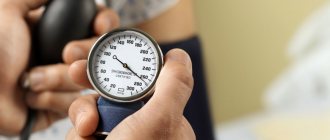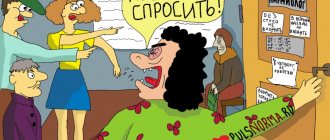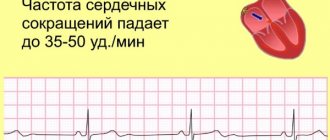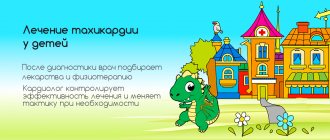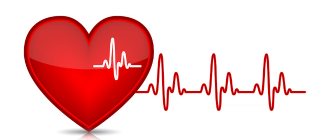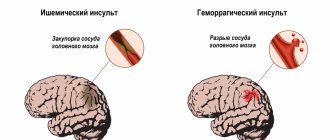The normal heart rate for a 14-year-old teenager is 70-74 beats per minute, but it can rise to 90 beats per minute under certain circumstances, for example: strong emotional stress, stress, physical activity, drinking coffee and strong tea. If, with a pulse of 80 beats per minute, dizziness, shortness of breath, and tremor of the upper extremities are present, then the teenager should be examined by a cardiologist to diagnose pathologies of the nervous, cardiovascular or respiratory, endocrine systems.
You can maintain a normal heart rate in a teenager by moderate physical activity, quitting smoking and coffee/strong tea, regular walks in the fresh air, and stabilizing the psycho-emotional background.
Normal pulse in a 14 year old teenager in normal condition
In a 14-year-old teenager, a pulse of 70-74 beats per minute is considered normal, but unless there was physical activity before the measurement, the child’s condition is stable and is free from stress, inflammatory, and infectious processes.
It is interesting that with age, the pulse rate constantly changes: until the age of 5, a pulse of 100 beats per minute will be normal; at the age of 15, a pulse reaching values of 80-90 beats per minute is considered normal. This is due to the fact that in adolescence there is active growth and development of almost all body systems, which leads to an increase in heart rate - tachycardia.
What is the heart rate at 13-15 years old when playing sports?
When playing sports, the pulse quickens in any person; in teenagers it can reach values of 120-150 beats per minute. More accurate indicators depend on several factors:
- how intense the physical activity was;
- whether the teenager is overweight;
- Is the hormonal system functioning stably?
- Is there a stressful situation?
It is important to check your pulse not only immediately after playing sports, but also take a control measurement after 10-15 minutes - normally, the beats should become less frequent, their number should be closer to the age norm. Otherwise (the pulse continues to be elevated), you should contact a cardiologist and undergo an examination. Anemia, diseases of the respiratory, endocrine or cardiovascular systems may be diagnosed.
If a teenager is involved in sports on a regular basis, then after regular training his pulse can increase to 100-120 beats per minute, and the highest indicators will be recorded only during competitions (full dedication + emotional experience).
Cardiovascular system of a teenager
Often children in adolescence complain of unexpressed chest pain, dizziness and attacks of rapid heartbeat and rapid pulse. Most often, this is the body’s reaction to stress, and not symptoms of serious pathologies. For example, the cause of this condition may be:
- drinking coffee in large quantities;
- large excess weight;
- excessive physical activity;
- eating foods high in fat and salt;
- smoking, drinking alcoholic beverages.
In order to exclude possible progression of internal pathologies, the teenager should undergo an examination. The doctor will, at a minimum, measure your cholesterol and blood pressure levels, since, coupled with an increased heart rate, too high readings indicate problems with the kidneys and heart.
If an increased pulse and dizziness are recorded in a teenager no more than 2 times a week, then there is no need to worry - this is considered normal during the period of active development of body systems. But if the child complains of these symptoms too often, and the condition persists for 1 year, then this is a reason to contact a specialist.
What does the pulse depend on?
The pulse depends on such features as: age, the presence of any diseases, physical activity. Also, pulsation depends on hormonal balance. During the period of its disturbance, during pregnancy, feeding, and adolescence, indicators tend to change.
Contraction frequencies are affected by a person's gender. The presence of pathology can provoke jumps in indicators. There are also physiological reasons for an increase in heart rate: after eating, drinking coffee, or with prolonged abuse of bad habits.
The heart rate is different at different times of the day. At night the indicators are at their lowest level, in the morning after waking up below average, and the greatest pulsation is observed from 3 o’clock in the afternoon until the evening.
The main criterion for assessing abbreviations is age. At different periods of life, different readings of the norm are distinguished.
What can normally provoke a high heart rate in a teenager?
A high heart rate in a teenager can be caused by physiological reasons:
- increased body temperature - with an increase of 1 degree, the heart rate increases by 10 beats;
- physical activity, including work and sports;
- severe pain - for example, from injuries, burns;
- excitement, nervous tension, experiencing strong emotions - positive or negative.
In addition, the pulse may increase in an unventilated room at high air temperatures, and this will also be considered a non-pathological phenomenon.
High rates of disease
If the increased heart rate is associated with pathologies, then, in addition to the main symptom, there will be dizziness, shortness of breath (at rest or with minimal physical exertion), short-term fainting, and nausea not associated with food intake. Most often, tachycardia (as a persistent increase in heart rate is called in medicine) develops in adolescence against the background of:
- oncological processes;
- disorders of the nervous system;
- acute and chronic course of infectious diseases;
- problems in the functioning of the endocrine system caused by pathological changes;
- vascular diseases;
- disturbances in the functionality of the heart;
- heavy menstrual bleeding;
- dehydration;
- poisoning with alcohol, drugs, food.
Doctors begin to talk about tachycardia if a teenager’s pulse rate is 80 beats per minute at absolute rest, and with light physical activity it rises to 180-200 beats per minute.
Tachycardia in adolescence can be of two types:
- Primary. The second name is paroxysmal, and is considered the primary symptom of organic heart damage. The duration of attacks can last several minutes and reach 1-3 hours. The second sign of paroxysmal tachycardia is rhythm disturbance.
- Secondary – sinus, when the teenager’s heartbeat is rapid, but the rhythm remains stable. Most often, the development of this type of disease is caused by pathologies of the thyroid gland, anemia, chronic diseases of internal organs, as well as long-term use of medications from the group of glucocorticosteroids.
According to doctors, physiological tachycardia (sinus) is most often diagnosed in adolescence, and this does not pose any danger to human health and life. Moreover, sinus tachycardia is often asymptomatic, so it can only be detected by regularly counting the teenager’s pulse.
In case of constant fixation of 80-90 beats per minute, it is worth visiting a cardiologist and having an electrocardiogram done to exclude or confirm pathologies.
If the pulse is 100, is it dangerous?
If a teenager has a pulse of 100 beats per minute, then it will be possible to understand how dangerous this is only by taking into account all the accompanying factors:
- whether the teenager played sports or did heavy physical work;
- whether the child smokes or drinks alcoholic beverages or drugs;
- Is the teenager under stress?
- how often and in what volumes the patient drinks coffee and strong black tea.
At the age of 14-17 years, children often experience strong emotions - fear, joy, anger, resentment, so increased heart rate is quite normal. But if a pulse of 100 beats per minute is recorded regularly and even at rest, immediately after waking up, then you need to visit a doctor and undergo an examination. Perhaps a hidden pathological process is occurring in the body.
If your pulse is high and your blood pressure is normal
A high pulse with normal pressure can be caused not only by classical physiological reasons, but also by certain pathologies:
- diseases of the hematopoietic system;
- problems in the functionality of the respiratory system;
- thyroid dysfunction.
Normal blood pressure, coupled with a rapid pulse, can lead to the development of cardiac asthma, which often requires urgent medical intervention, because it poses a danger to the life of a teenager with the rapid development of loss of consciousness, pulmonary edema, arrhythmic shock, and problems in cerebral circulation.
To exclude pathological causes of increased heart rate against the background of normal blood pressure, a teenager should be examined by a cardiologist.
Treatment of the disease
How to treat tachycardia will become clear after the cause is identified in the child. This pathology is treated by a cardiologist and other highly specialized specialists, depending on the results of the examination. For example, in case of problems with the thyroid gland, this will be an endocrinologist.
Important! If you find tachycardia in a child, then before consulting a doctor, exclude any stimulants from his diet - tea, coffee, chocolate, and protect him from stress as much as possible.
Therapy is selected individually, taking into account the underlying disease that caused the tachycardia. If a child has central nervous system dysfunction, a neurologist will prescribe sedatives. For heart pathologies, therapy is carried out by a cardiologist. At the same time, there are a lot of heart diseases, so treatment approaches vary. So, if an infection provokes myocarditis, then you will need to take an antibiotic. For autoimmune diseases that lead to arrhythmia, cytostatics and glucocorticosteroids are prescribed. Also, for any disease that causes tachycardia, the cardiologist can in any case prescribe a drug that will make the heart rate slower in order to relieve the load on the heart.
Why does a teenager have a low heart rate?
A low heart rate in a teenager is called bradycardia and is diagnosed if the heart rate is 60 beats per minute or less. The causes of this condition can be physiological and pathological factors. The first option includes constant exercise, and if a decrease in heart rate is noted against the background of excellent general health, then such indicators only indicate excellent fitness of the body and a healthy cardiovascular system.
In the presence of dizziness, severe pallor of the skin, and low blood pressure, bradycardia may indicate pathological disorders in the functioning of the nervous, respiratory and cardiovascular systems; sometimes such signs are characteristic of gastric/duodenal ulcers.
While tachycardia is often asymptomatic, bradycardia is characterized by general weakness, dizziness, frequent cold sweats, and fainting.
Pulse measurement
First of all, you need to measure your pulse. To do this, you need to place your thumb on the radial artery, which is located on the wrist. In this area of the body, the vessel can be felt very easily. You can feel the pulsation with your thumb and count the number of beats. You can also take measurements of the carotid, temporal, femoral and other arteries. But usually only the hand is used.
To obtain accurate data, you need to count the teenager’s pulse on the left and right wrist. If the rhythm of contractions is not disturbed, then you can measure the number of beats in 30 seconds and multiply the result by two. If the pulse is irregular, you need to count the beats for the entire minute.
How to normalize an elevated heart rate in a teenager
An elevated heart rate in a teenager can be normalized only after the cause of the tachycardia is eliminated. If this is a pathological condition, then full treatment and even surgical intervention is needed. Doctors can prescribe medications from a variety of drug groups:
- beta blockers – Bisoprolol, Metoprolol;
- potassium channel activators – lidocaine;
- cardiac glycosides – Korglykon, Strophanthin;
- sodium channel blockers – Disopyramide;
- calcium channel blockers - Amiodarone, Verapamil.
If the reasons are physiological
But in the case of physiological tachycardia, the following recommendations from doctors can be used:
- Sports activities. You should start with minimal physical activity and actively use target heart rate values during training. This term refers to the heart rate that promotes maximum muscle performance.
Doctors say that for effective exercise it is enough to maintain the heart rate within 50-70% of the permissible maximum. For example, a 16-year-old teenager would have a normal heart rate of 102-143 beats per minute at the time of exercise. But you need to take into account that as you train, this figure will increase - after a year of constant training in the pool, the normal heart rate will already be 143-173 beats per minute.
- Elimination of stressful situations. You need to calm the teenager down as much as possible; if necessary, you can seek help from a psychotherapist - for example, if the child cannot cope with anxiety or emotional stress during the exam period. Parents should not escalate the situation (“if you don’t pass the exam, there will be no vacation,” “you’ll stay for a second year,” and so on), but make it calmer - reassure the teenager, help with classes, give time for proper rest.
- Adjust your diet. It is necessary to exclude coffee, strong black tea, chocolate from the diet, and make the entire menu varied, enriched with vitamins and healthy drinks - fruit drinks, compotes.
First aid at home
If an attack of tachycardia occurs suddenly, then you can quickly normalize the pulse rate with the following “exercises”:
- take alternate deep and quick breaths, then slow, deep exhalations;
- wash your face with cold water, you can put your face in a basin of ice water (only under the supervision of another person!);
- do a light massage of the eyeballs with your fingertips (they are closed), without pressure or strong tapping;
- try to induce vomiting (you can irritate the root of the tongue with the handle of a teaspoon) - if everything works, then vomiting is not critical.
Each action can be performed for no more than 30 seconds in a row, this can reduce the heart rate by 20-30 beats per minute.
Traditional methods
The problem of high heart rate in adolescence can be solved using some traditional medicine:
- Tea with mint. Prepared in the usual way - 1 teaspoon of plant material per 250 ml of boiling water, leave for 15-20 minutes. Can be taken warm or cold; you need to drink 200-300 ml of this drink per day.
- St. John's wort infusion. The dried herb in the amount of 1 tablespoon is placed in boiling water (300 ml) and infused in a closed/wrapped container for 20-30 minutes. The resulting drink is filtered and the entire volume is drunk throughout the day.
Folk remedies should be taken for a long time - at least 2-3 weeks on a daily basis, and if the pulse does not normalize during this period, then you need to seek qualified medical help.
How are changes in indicators determined?
To detect tachycardia or bradycardia, you can use several methods. For example, with Voltaire monitoring, changes in pulsation are noted throughout the day. There are also tests to determine how much your heart rate changes during exercise and how quickly it recovers.
With age, indicators begin to deviate from the norm more often due to the presence of chronic diseases, bad habits, stress, and also due to a decrease in the elasticity of blood vessels. All this can lead to heart failure.
What to do if your readings are low
If low heart rate is not caused by pathological processes, then no action needs to be taken; often this condition is generally considered normal (for example, for professional athletes). But if there is a sudden drop in heart rate, the teenager’s vision becomes dark, or general weakness appears, then you can correct your well-being by drinking a cup of coffee or the strongest possible black tea. If after 3-5 minutes the pulse does not return to normal, then an ambulance should be called.
If an increase in heart rate often occurs for physiological reasons, then its decrease is almost always associated with pathological changes. Bradycardia is a reason to consult a doctor and undergo examination, diagnosis and further treatment.
Normal heart rate by age
In newborns, the pulse is quite high. Up to 1 month, the indicators range from 110 to 170. Up to 6 years, the number of beats in children gradually decreases, but remains more than 100. Up to 12 years, the indicators become even lower, up to 80. In adolescence, the minimum pulse value is 55, the maximum is 95. Normal pulse for teenagers – 70–75. Up to 50 years of age, the average contraction frequency is 70. This is considered the norm in young and middle age. Then the indicators rise again. In old age, due to weakening of functions and systems, pulsation increases.
Maintains normal heart rate
In order for the pulse to always be within normal limits and rhythmic, you need to maintain the functioning of the cardiovascular system with moderate physical activity, strengthening the general immune system, regular walks in the fresh air, and a healthy/rational diet.
Teenagers are susceptible to emotional overload, and their hormonal levels are often unstable. Therefore, parents should show maximum attention to their well-being, for example, promptly seek help from a psychotherapist, load them with tasks moderately, and give them more time for rest.
In adolescents, a normal pulse is recorded extremely rarely, because the active development of all body systems, hormonal fluctuations, and powerful emotional experiences affect it. Parents should understand that an increase in heart rate at the age of 14-17 years to 100 beats at rest will be the norm if this is recorded periodically and without other symptoms such as dizziness, chest pain, shortness of breath.
Functions in the body
The pulse refers to the oscillation of the arteries, which is caused by the flow of blood into them. A push or beat indicates a contraction of the heart. As a result, the blood vessels are compressed due to the movement of blood through them. The indicator is measured in beats per minute.
The pulse can be used to determine a person's health status. First of all, the indicator speaks about the functionality of the cardiovascular system. Additionally, it is possible to identify the child’s physical fitness.
The pulse has a classification. The varieties are listed in the table.
| Pulse name | Description |
| Arterial | The walls of the blood vessels contract as blood leaves the heart. The pulse is determined by touching the arteries - in the arm (radial) or neck (carotid). |
| Capillary | The pulse is also called Quincke's pulse. Capillary index means a change in nail color synchronous with arterial waves. The pulse is determined on the nail. If a person is healthy, when the upper part of the plate is pressed, its half turns pale. And there is redness at the bottom of the nail. There should be a clear boundary between these colors until the pressure on the plate stops. This is called a negative Quincke reaction. If the aortic valve is damaged, during systole (contraction of the ventricles and blood flow) the nail turns red. And during diastole (relaxation of the organ), the plate turns white. This is a positive Quincke reaction. |
| Venous | Involves the presence of a pulse in the jugular (neck) or other veins that are close to the heart. If a person is healthy, waves are detected only visually. And during palpation, the pulse is difficult to determine due to low pressure in the veins and weak tension in the walls of blood vessels. The volume of the vein changes due to the pressure difference in the vessel. If the flow of venous blood to the right atrium is normal, the jugular veins in a healthy person are not noticeable in an upright position. Their filling occurs when intrathoracic pressure increases. For example, during straining, coughing, singing. In a horizontal position, the vein should be filled to 1/3 of its length above the collarbone. When a person stands up, the overflow disappears. |
In addition to the variety, the pulse has characteristics. Detailed information is shown in the table.
| Name | Description |
| Frequency | Another name is heart rate (HR). The value reflects the contraction of the artery walls. The following types of heart rate are distinguished:
Rare heartbeats are called bradycardia. And tachycardia is frequent vibrations of the artery walls. Sometimes the pulse becomes less than the heart rate. This is due to the fact that with weak contractions, an insufficient amount of blood enters the aorta, and the wave does not reach the arteries. |
| Rhythm | These are the intervals that appear between pulse waves. Normally, PS should be rhythmic. That is, the waves follow each other at the same time. In case of rhythm disturbance, the pulse becomes arrhythmic. That is, the waves follow each other at irregular intervals. |
| Filling | A value that means the amount of blood leaving the artery at the height of the pulse. The indicator can be moderate, full (exceeds the norm), empty (palpation of waves is impossible). Additionally, there is thread-like filling (barely noticeable). |
| Voltage | Understands the force required to completely stop blood flow. There is moderate, hard and soft tension. The value is related to blood pressure (BP). The higher the blood pressure, the more intense the pulse. For example, with hypertension, force is required to compress the artery and stop pulsation (hard). And with low blood pressure, everything is done easily, the pulse disappears even with little effort (soft). |
| Height | This is a displacement of the vibrations of the walls of the arteries. To determine the indicator, the sum of the tension and fullness of the pulse is determined. There is a large, small and moderate wave. |
| Speed or form |
|
